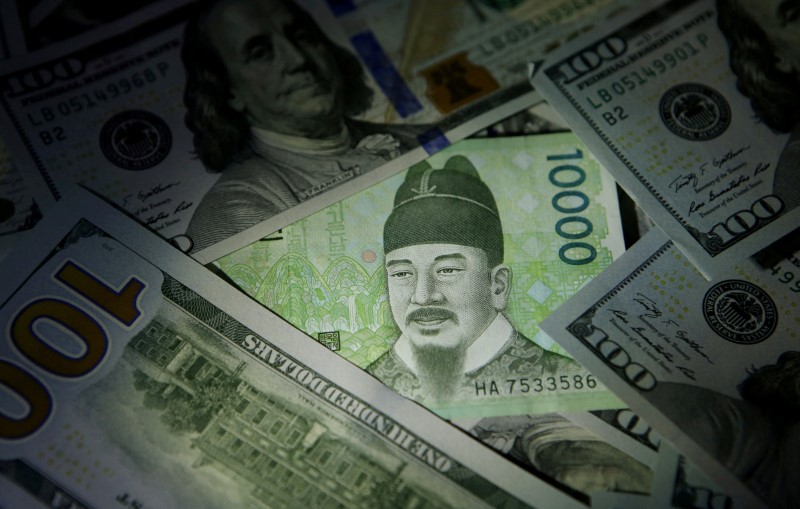Asia FX drifts lower as Fed jitters persist, dollar loses ground
2023.04.25 02:09

© Reuters.
Investing.com — Most Asian currencies fell on Tuesday, taking little support from a weaker dollar as markets continued to fret over rising U.S. interest rates, while fears of slowing economic growth kept appetite for risk-driven assets limited.
lost 0.3% as data showed that the country in the first quarter. But while steady consumer spending helped support the country’s GDP, sluggish capital investment and weak exports pointed to more economic headwinds this year.
The weak GDP also lent further credence to the to hold interest rates, which is dovish for the won.
fell 0.2%, and was once again trading close to the 7 level against the dollar amid mixed signals on an economic recovery in the country. While Chinese commodity imports improved substantially in March, the property sector shrank, and growth in consumer spending still remained well below pre-COVID levels.
grew more than expected in the first quarter of 2023. But growth was largely skewed to the service sector, as manufacturing continued to struggle.
The fell 0.1%, as new Bank of Japan Governor Kazuo Ueda said that the bank will likely maintain its ultra-dovish stance in the near-term.
Ueda’s comments come ahead of a on Friday, with markets seeing little potential for a change in the central bank’s yield curve control policy.
Uncertainty over the path of U.S. monetary policy weighed on broader Asian currencies, while the dollar weakened slightly.
The fell 0.3% in holiday-thinned trade, while the lost 0.2%.
The and fell less than 0.1% each, but were trading at near two-week lows after sharp losses on Monday.
While the Federal Reserve is widely expected to , markets are positioning for a mid-year pause in rate hikes, especially as economic growth and inflation continue to cool.
due on Thursday is expected to shed more light on U.S. economic growth, with analysts expecting a slowdown in growth from the prior quarter.
While a potential pause in the Fed’s rate hike cycle bodes well for Asian markets, worsening growth in the world’s largest economies is likely to limit capital flows into risk-heavy regional currencies.








